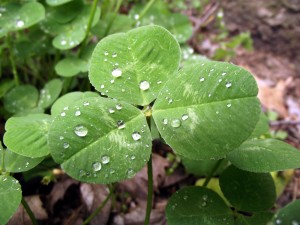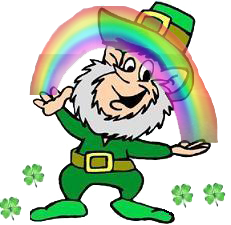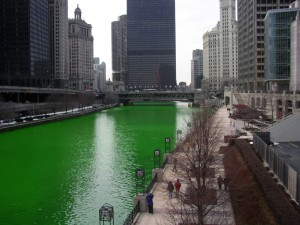 Saturday, March 17, is St. Patrick’s Day. You may have heard of it, but perhaps you’re wondering what sort of holiday it is. Let’s take a quick look at this informal holiday, which has come to be viewed largely as a day of Irish national pride.
Saturday, March 17, is St. Patrick’s Day. You may have heard of it, but perhaps you’re wondering what sort of holiday it is. Let’s take a quick look at this informal holiday, which has come to be viewed largely as a day of Irish national pride.
St. Patrick’s Day is a celebration commemorating Saint Patrick, the patron of Ireland. It started as a feast day, but then in the 1600s it officially became a Catholic “holy day” (from which we get the English word “holiday”) of obligation for Roman Catholics in Ireland. Patrick was a fourth century slave from Britain who was brought to Ireland. He eventually escaped and returned to his family, but came back later to Ireland and was involved in Christianizing the Irish people. According to legend, he drove the snakes from Ireland, but this is rather unlikely, since the Ireland’s climate is not hospitable to snakes in the first place. This legend could be interpreted symbolically, however: evil (represented by the snakes) was driven from Ireland through St. Patrick’s evangelism. Legend also states that he used a shamrock (three-leaved clover) to explain the Christian doctrine of the Trinity. It is for these reasons that Saint Patrick has been closely associated with Ireland and the Irish people.
Many Irish people immigrated to the United States, especially in the 1800s and early 1900s. These immigrants brought with them their Irish pride, and St. Patrick’s Day evolved from a religious celebration to a day of national pride, making Irish-American largely responsible for creating our modern St. Patrick’s Day celebration. Today, there are several ideas that people associate with St. Patrick’s Day:
Wearing of the green – Not only are shamrocks green, but Ireland is known as the “Emerald Isle,” so it is not surprising that the color green should be prominently displayed or worn on St. Patrick’s Day. Although the phrase “wearing of the green” refers specifically to wearing a shamrock on one’s lapel, by extension, people wear some sort of green item.
 Leprechauns – These mythical little creatures are said to guard the pot of gold that is supposed to be at the end of the rainbow. If you can catch a leprechaun, you can make him take you to his secret stash of treasure. But watch out – he will try to trick you and sneak away without giving you the gold!
Leprechauns – These mythical little creatures are said to guard the pot of gold that is supposed to be at the end of the rainbow. If you can catch a leprechaun, you can make him take you to his secret stash of treasure. But watch out – he will try to trick you and sneak away without giving you the gold!
Parades – People love a parade, and St. Patrick’s Day is no different. Cities with a large Irish population, such as Boston and Chicago, are well known for their St. Patrick’s Day parades. It seems that politicians especially love these parades, as it gives them exposure to potential voters and free publicity 🙂 .
Drinking – For whatever reason, drinking is a stereotype associated with Irish people, and many people like to imbibe in Irish beer. In keeping with the spirit of the holiday, some bars will offer beer that has been dyed green. Fortunately, the color does not affect the flavor.
 Greening of the Chicago River – Since 1962, there has been a tradition of dyeing the Chicago River green in honor of St. Patrick’s Day. Chicago has a notable Irish population; indeed, there have been no fewer than 12 Irish mayors in the city’s history. The idea for coloring the river green came from a certain dye that plumbers used to detect if any waste materials from the sewer system were leaking into the river. The precise formula used for the dye is “top secret.” Some people were concerned that it might be harmful to the environment, but water samples with the dye were sent to an environmental engineer as well as a professor at Johns Hopkins University, both of whom confirmed that the dye was safe to use.
Greening of the Chicago River – Since 1962, there has been a tradition of dyeing the Chicago River green in honor of St. Patrick’s Day. Chicago has a notable Irish population; indeed, there have been no fewer than 12 Irish mayors in the city’s history. The idea for coloring the river green came from a certain dye that plumbers used to detect if any waste materials from the sewer system were leaking into the river. The precise formula used for the dye is “top secret.” Some people were concerned that it might be harmful to the environment, but water samples with the dye were sent to an environmental engineer as well as a professor at Johns Hopkins University, both of whom confirmed that the dye was safe to use.
